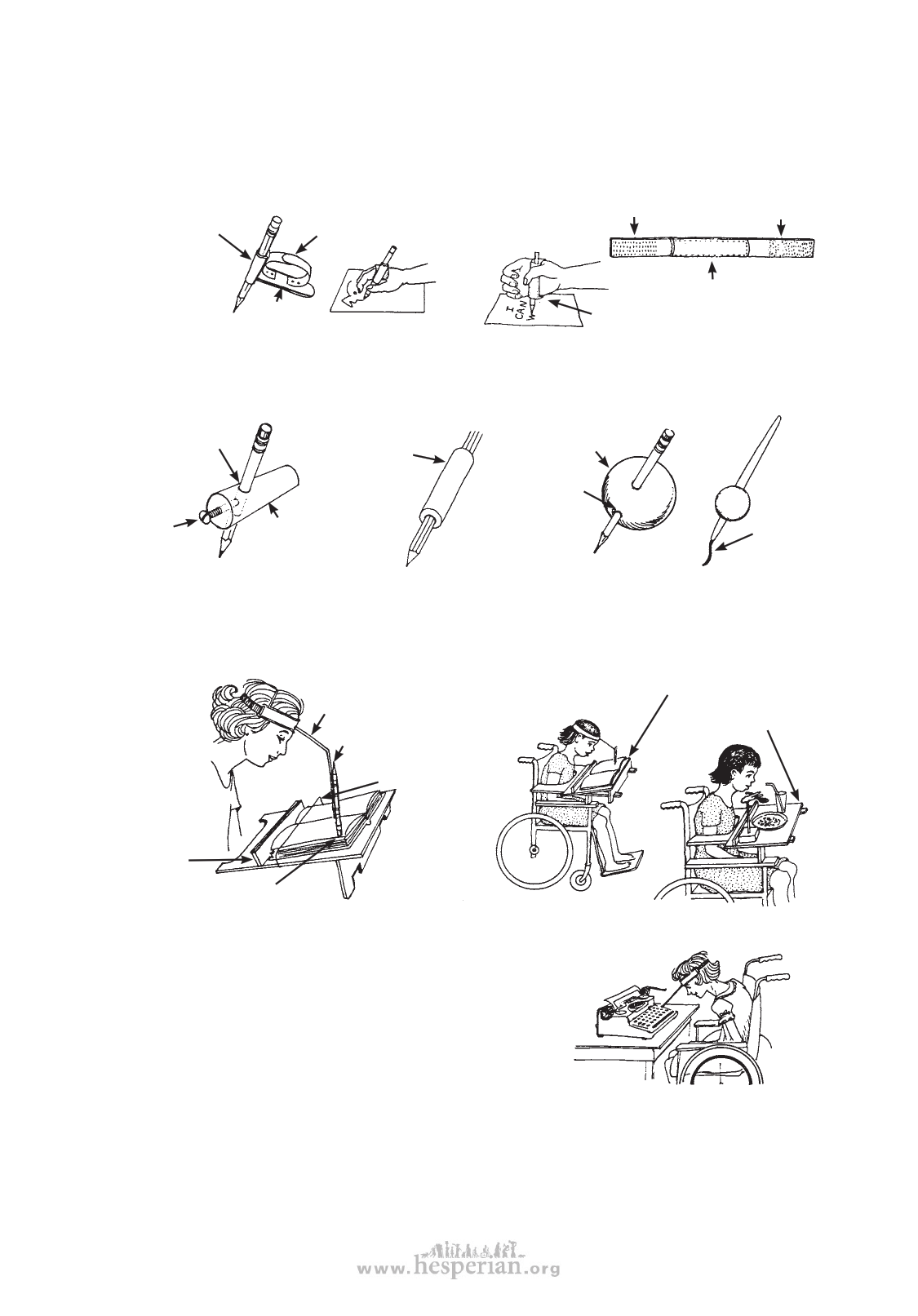
AIDS FOR READING, WRITING, AND DRAWING
EDUCATION 501
PENCIL HOLDER FOR A WEAK OR PARALYZED HAND
For children who have difficulty holding a pen, pencil, or brush, or turning the pages
of a book, you can think of all sorts of adaptations. Here are a few examples:
piece of leather
or stiff cloth
fastened to a
stick, with space
to force a pencil
through the hole
Velcro or
buckle
stick
SIMPLE
MODEL
Velcro (sticks-to-itself strap)
strap
around
hand
long thin pocket
to hold pencil
sewed onto strap
AIDS FOR HOLDING PENCILS, PENS OR BRUSHES
A thick handhold gives better grip and control.
pencil-sized hole
screw to
hold pencil
in place
piece of
hose or
tubing
piece of a
tree branch
rubber ball
hole slightly
smaller than
pencil—so
that it must
be forced
through it
brush
For other ideas, see pages 223 and 330.
PAGE TURNER (Design for head)
metal rod attached
to headband
pencil upside down
wire to keep
pages straight
Tray table lifts up for
reading and writing,
and down for eating
wood book
support
rubber eraser used for
‘grip’ to turn pages.
For writing,
a pencil or
pen can be
taped with the
point down
Many children who have poor hand control and
cannot write clearly by hand can learn to write well
on a typewriter—using their hands or a stick attached
to their heads. A typewriter may be a wise investment
for an intelligent but severely disabled child—and
may in time provide a way for her to earn money.
A pocket calculator is much cheaper than a typewriter. A disabled person who is
good with numbers can do many different kinds of accounting jobs.
For more ideas on special aids and adaptations, see Chapter 27 on amputations,
Chapter 9 on cerebral palsy, and Chapter 62 on special aids.
disabled village children